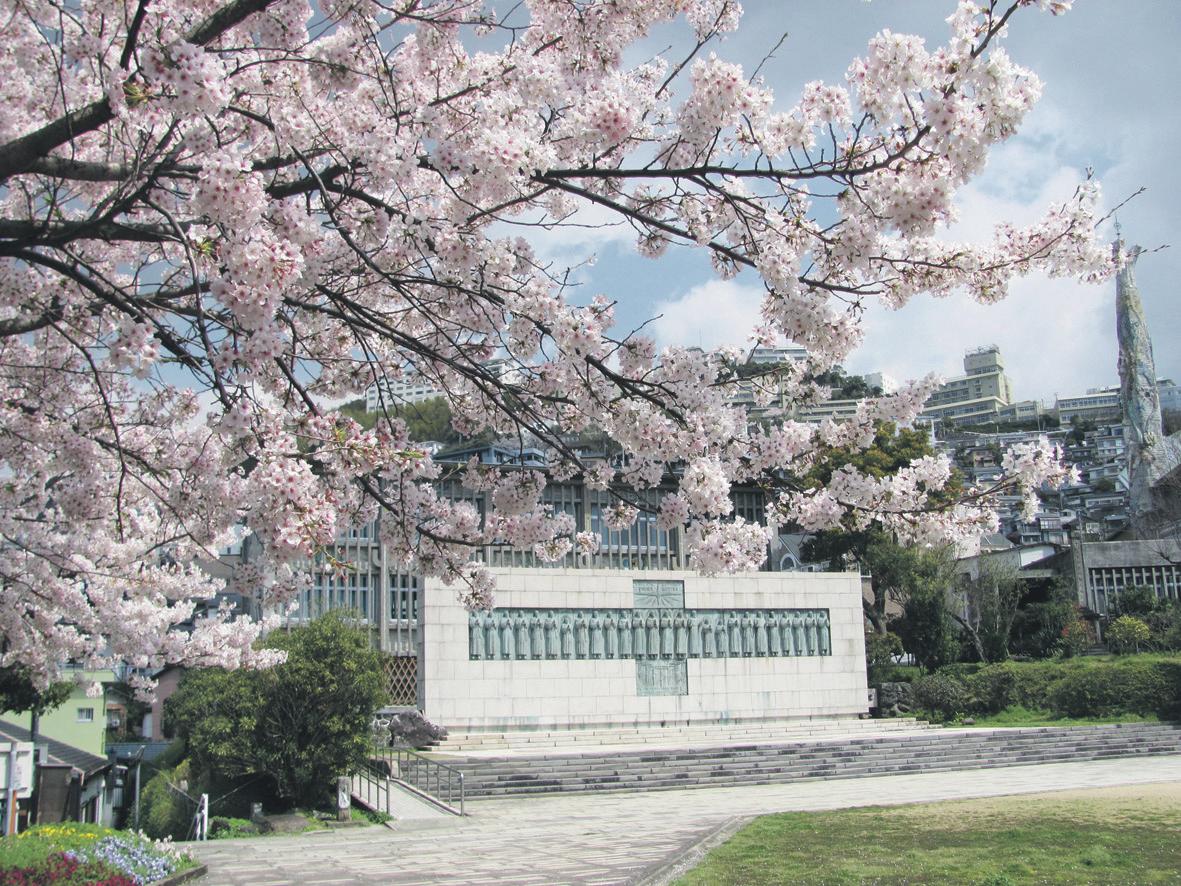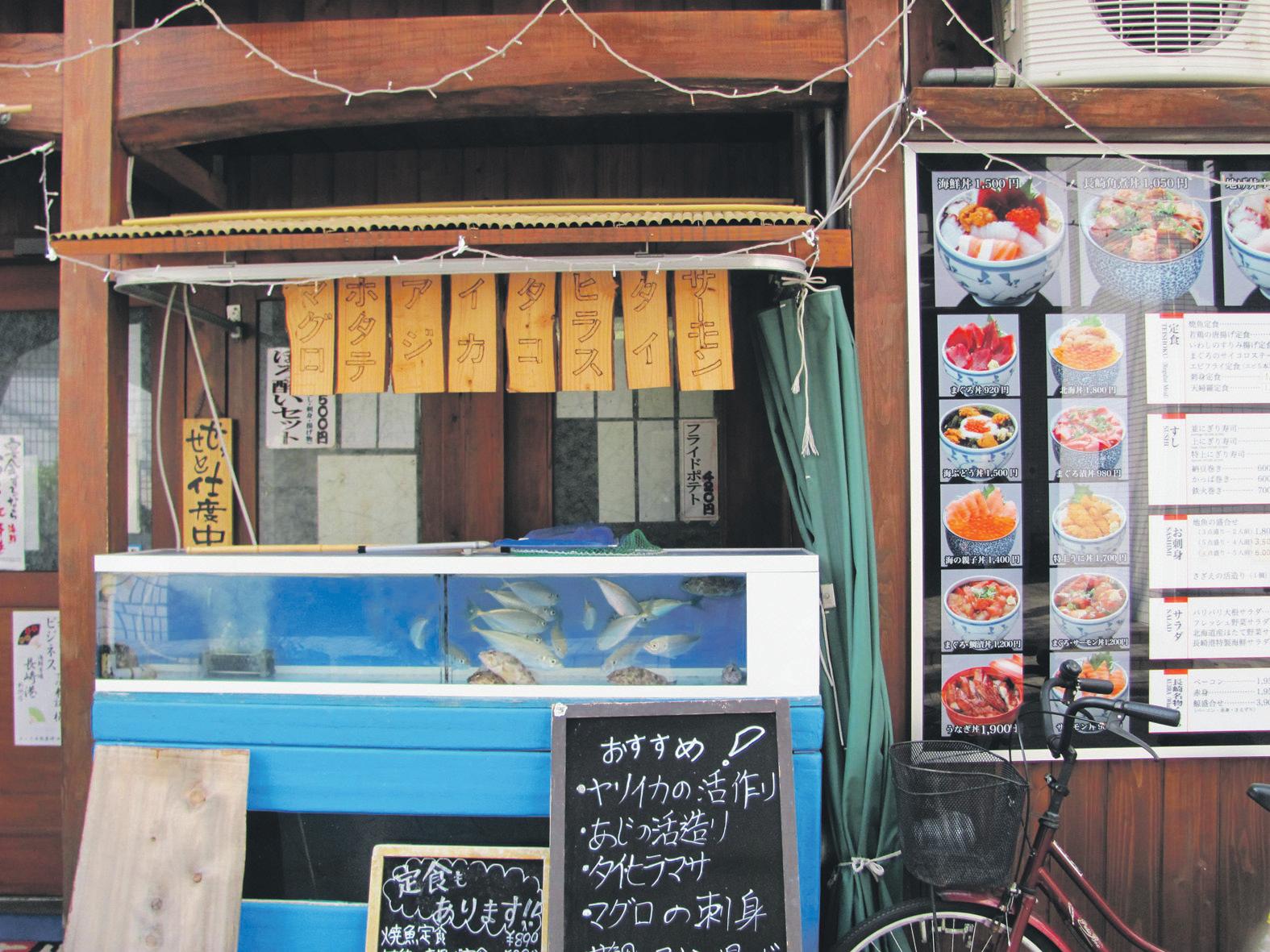
2 minute read
Nagasaki
from 2013-07 Sydney (1)
by Indian Link
Spectacles Bridge, Japan’s oldest arch-shaped stone bridge. I then turned off to view the temples, walking along hilly cobbled streets of rows of houses and apartments stacked neatly on top of each other like playing blocks.
Built by Chinese traders, the temples are scattered on the hillside. The oldest temple is Kofukuji, built in 1620, which presides over the city below. Its peaked roofs and scattered halls surround a series of pleasant lawns and gardens, while forests begin just behind the temple. Built as a place where they could pray for a safe voyage, and considering Japan’s persecution of Christians at the time, the Chinese traders also thought it prudent to prove they were Buddhists.
Sofukiji Temple was another temple founded by Chinese traders in 1629, and is Nagasaki’s most famous temple. Its Buddha Hall is painted brilliant red and decorated with Chinese lanterns. The temple’s giant cauldron was built by a priest during a terrible famine in 1680, to make enough porridge to feed 3,000 people a day.
After visiting the post office, downtown department stores and train station to view the bullet trains, I headed for HamanoMachi and Kanko-Dori, funky shopping arcades featuring boutiques, cafes and restaurants. South of the city, Hollander Slope is Nagasaki’s prettiest street, cobbled and lined with timber houses built by Europeans, so- called because at the time, all Europeans were referred to as Hollanders.
A short walk away is the Oura Catholic Church, the oldest remaining church in Japan built in 1864 by French missionaries. Nearby is Glover Garden, a beautiful garden to meander through, redolent of history and containing the homes of prominent European traders. The centrepiece is the home of Thomas Glover, built in 1863, the oldest western style building in Japan. Glover was a Scottish merchant who came to Japan in 1859 at the age of 21, and contributed greatly to the modernisation of Japan through shipbuilding, and coal mining. Interestingly, he is also referred to as the father of Japanese beer!
Far from the impression I’d formed that I would suffer sensory overload in Japan, Nagasaki is relaxed, accessible and welcoming. In just one day I’d encountered many Japanese who inquired or tried to help with their snippets of English, and I enjoyed discovering obscure winding streets and neighbourhoods. As I sat on the hill in Glover Garden, I unwrapped the delicate slice of Castella cake, introduced by Portuguese traders and progressively modified to Japanese tastes that has eventually resulted from the meeting of east and west in Nagasaki. Enjoying my cake and looking out towards the sea, I wished that I could have stayed much longer.
Travel noTebook
n Ag ASAKI
Getting There
Fly to Nagasaki with Japan Airlines and Korean Air. Qantas, Cathay, China Airlines and Jetstar will also get you to major transport hubs in Japan, from where a bullet train will deliver you to Nagasaki at top speed. Alternatively, many cruise ships offer relaxing itineraries that include China, South Korea and Japan, a great way to visit if you have not been here before. I travelled with Azamara Club Cruises on a 14-night voyage. T: 1800 754 500 W: www.azamaraclubcruises.com
GETTING ARO u ND
Nagasaki is one of Japan’s most navigable cities with directional signs to sites in English and streetcars that are fun and affordable.
Where To Stay
There are many hotel choices, with many affordable options including YHA’s, business hotels and traditional Japanese inns. The Japan National Tourism Organisation has a helpful website and will mail brochures on request. T: 02 9279 2177 W: www.jnto.org.au

M u ST TRIES
The most famous and delicious is Castella, based on a Portuguese cake. It can be eaten in coffee shops all over town, but the most famous bakery is Fukusaya, 3-1 Funadaiku Machi in business since 1624.


Insider Tip
Changing money at banks can be slow and the rate of exchange quite low. Use ATM’s or 7 Eleven stores instead. English is not widely spoken.









